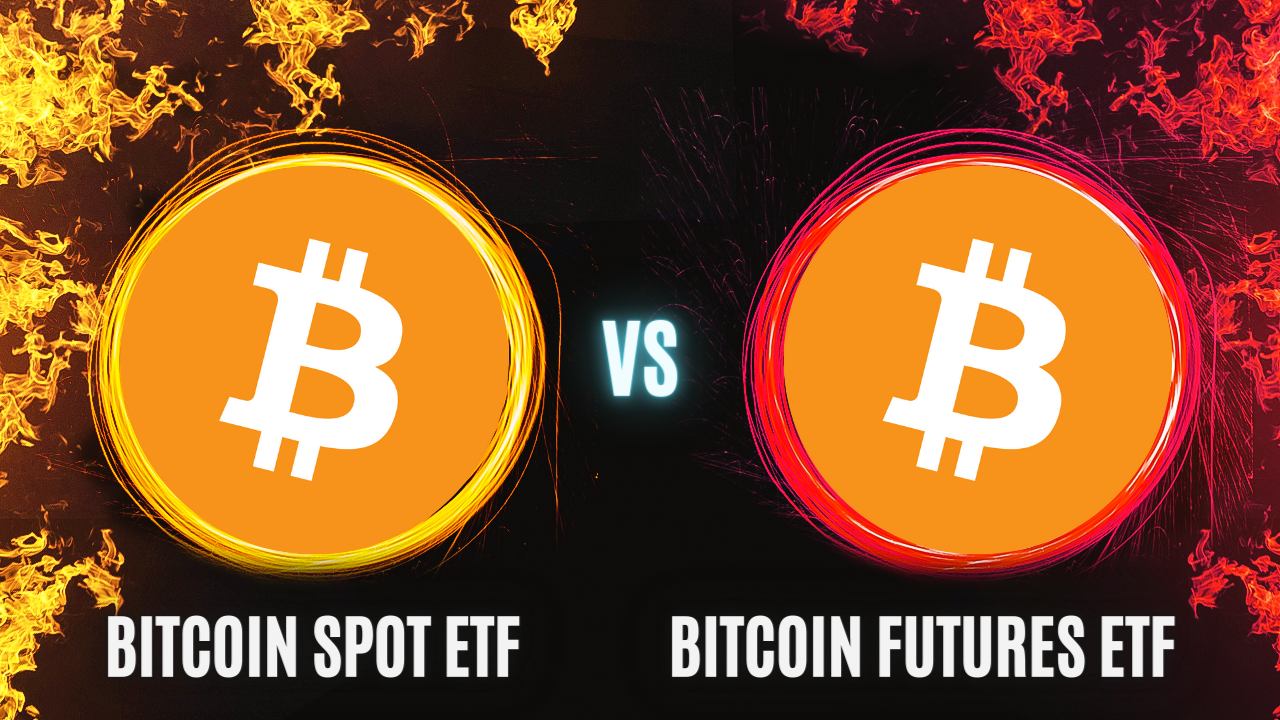Cryptocurrency exchange-traded funds (ETFs) have emerged as a significant avenue for investors to gain exposure to the crypto market. Among these, Bitcoin ETFs take center stage, providing a regulated and accessible way to invest in the digital currency. However, within the realm of Bitcoin ETFs, a crucial dichotomy exists: Bitcoin Spot ETFs and Bitcoin Futures ETFs. In this extensive guide, we unravel the intricacies of these two distinct investment vehicles, exploring their differences, benefits, and potential implications for investors.
Understanding Bitcoin Spot ETFs
Definition:
A Bitcoin Spot ETF, often referred to as a Physical Bitcoin ETF, directly holds and owns the underlying asset—in this case, Bitcoin. Investors in a Bitcoin Spot ETF are purchasing shares that represent ownership of actual bitcoins stored by the fund.
Operational Mechanism:
- Direct Bitcoin Ownership: A Bitcoin Spot ETF acquires and holds physical bitcoins, securing them in cold storage or custodial solutions.
- Creation and Redemption: Authorized Participants (APs) can create or redeem shares of the ETF in exchange for the actual bitcoins. This process helps maintain the balance between the ETF's share price and the value of its underlying assets.
Key Features:
- Direct Exposure: Investors in a Bitcoin Spot ETF gain direct exposure to the price movements of Bitcoin without holding the digital asset themselves.
- Physical Custody: The ETF physically holds the bitcoins it represents, enhancing transparency and authenticity.
- NAV Alignment: The Net Asset Value (NAV) of a Bitcoin Spot ETF is closely tied to the actual value of the bitcoins it holds.
Pros and Cons:
Pros:
- Transparency: Physical ownership ensures transparency regarding the quantity and location of the held bitcoins.
- NAV Accuracy: The ETF's NAV closely tracks the market value of the underlying bitcoins.
- Direct Ownership Benefits: Investors indirectly benefit from potential forks or airdrops of the held bitcoins.
Cons:
- Security Concerns: Physical custody introduces security challenges, albeit mitigated by robust custodial solutions.
- Operational Complexity: The creation and redemption process involving actual bitcoins can be operationally complex.
Decoding Bitcoin Futures ETFs
Definition:
A Bitcoin Futures ETF, also known as a Synthetic Bitcoin ETF, doesn't hold physical bitcoins. Instead, it uses financial derivatives, specifically Bitcoin futures contracts, to track the price movements of the digital currency.
Operational Mechanism:
- Futures Contracts: A Bitcoin Futures ETF invests in Bitcoin futures contracts, financial instruments that derive their value from the anticipated future price of Bitcoin.
- Rolling Contracts: As futures contracts approach expiry, the ETF "rolls" its positions by selling expiring contracts and purchasing new ones to maintain exposure.
Key Features:
- Derivative Exposure: Investors gain exposure to Bitcoin's price movements through futures contracts, without holding the actual cryptocurrency.
- Leverage and Margin: Futures trading allows for the use of leverage, enabling enhanced exposure to price changes.
- Efficiency: Futures contracts provide an efficient way to gain exposure without the operational complexities of physical custody.
Pros and Cons:
Pros:
- Operational Efficiency: No need for physical custody simplifies operational aspects.
- Leverage Potential: Futures contracts allow for amplified exposure and potential returns.
- Flexibility: Rolling contracts provide flexibility in managing exposure over different contract periods.
Cons:
- Basis Risk: The ETF's performance may deviate from the spot price due to factors like contango or backwardation in futures markets.
- No Direct Ownership Benefits: Investors miss out on potential benefits from forks or airdrops, as they don't own the actual bitcoins.
- Rolling Costs: Regularly rolling futures contracts can result in transaction costs and potential tracking error.
Comparative Analysis: Bitcoin Spot ETF vs. Bitcoin Futures ETF
1. Exposure Mechanism:
- Spot ETF: Directly holds physical bitcoins, providing exposure to the actual asset.
- Futures ETF: Utilizes futures contracts, offering exposure to the anticipated future price of Bitcoin.
2. Operational Complexity:
- Spot ETF: Involves the operational complexities of acquiring, storing, and securing physical bitcoins.
- Futures ETF: Streamlines operations by trading derivatives, eliminating the need for physical custody.
3. NAV Alignment:
- Spot ETF: NAV closely aligns with the market value of held bitcoins.
- Futures ETF: NAV may deviate from spot prices due to basis risk associated with futures contracts.
4. Security Concerns:
- Spot ETF: Faces security challenges related to the physical custody of bitcoins.
- Futures ETF: Relies on secure trading and custodial platforms without the need for physical storage.
5. Benefits of Direct Ownership:
- Spot ETF: Indirectly benefits from potential forks or airdrops of held bitcoins.
- Futures ETF: Misses out on direct ownership benefits associated with actual bitcoins.
Conclusion:
Choosing between a Bitcoin Spot ETF and a Bitcoin Futures ETF demands a good understanding of their distinct features and implications. Whether prioritizing direct ownership, operational efficiency, or specific risk considerations, investors can make informed decisions based on their preferences and objectives. As both types of ETFs contribute to the maturation of the crypto market, market participants can leverage these vehicles to navigate the dynamic terrain of digital asset investments.

